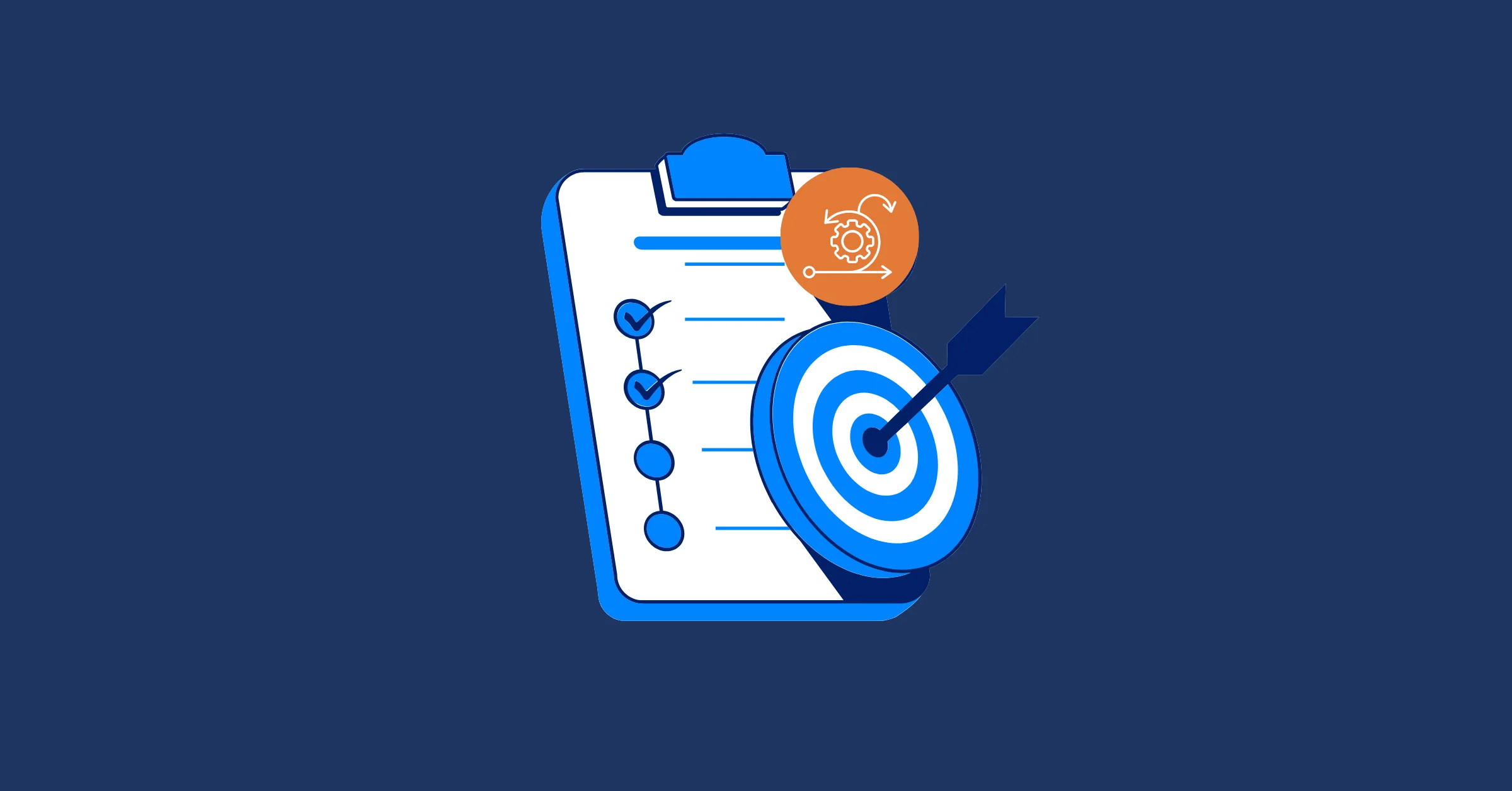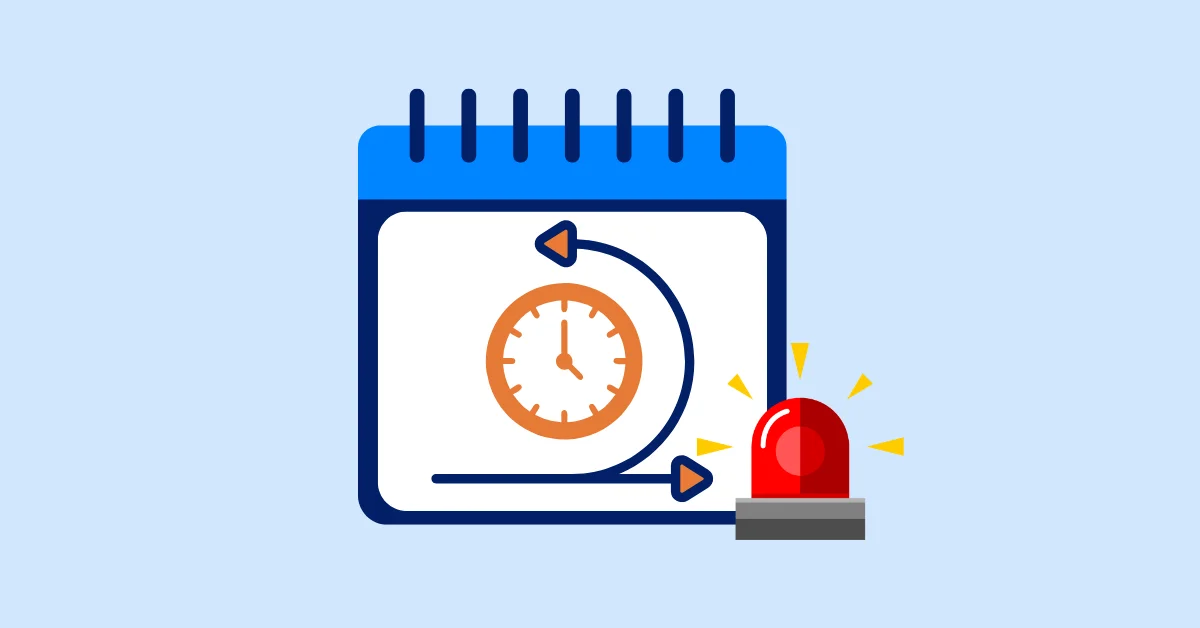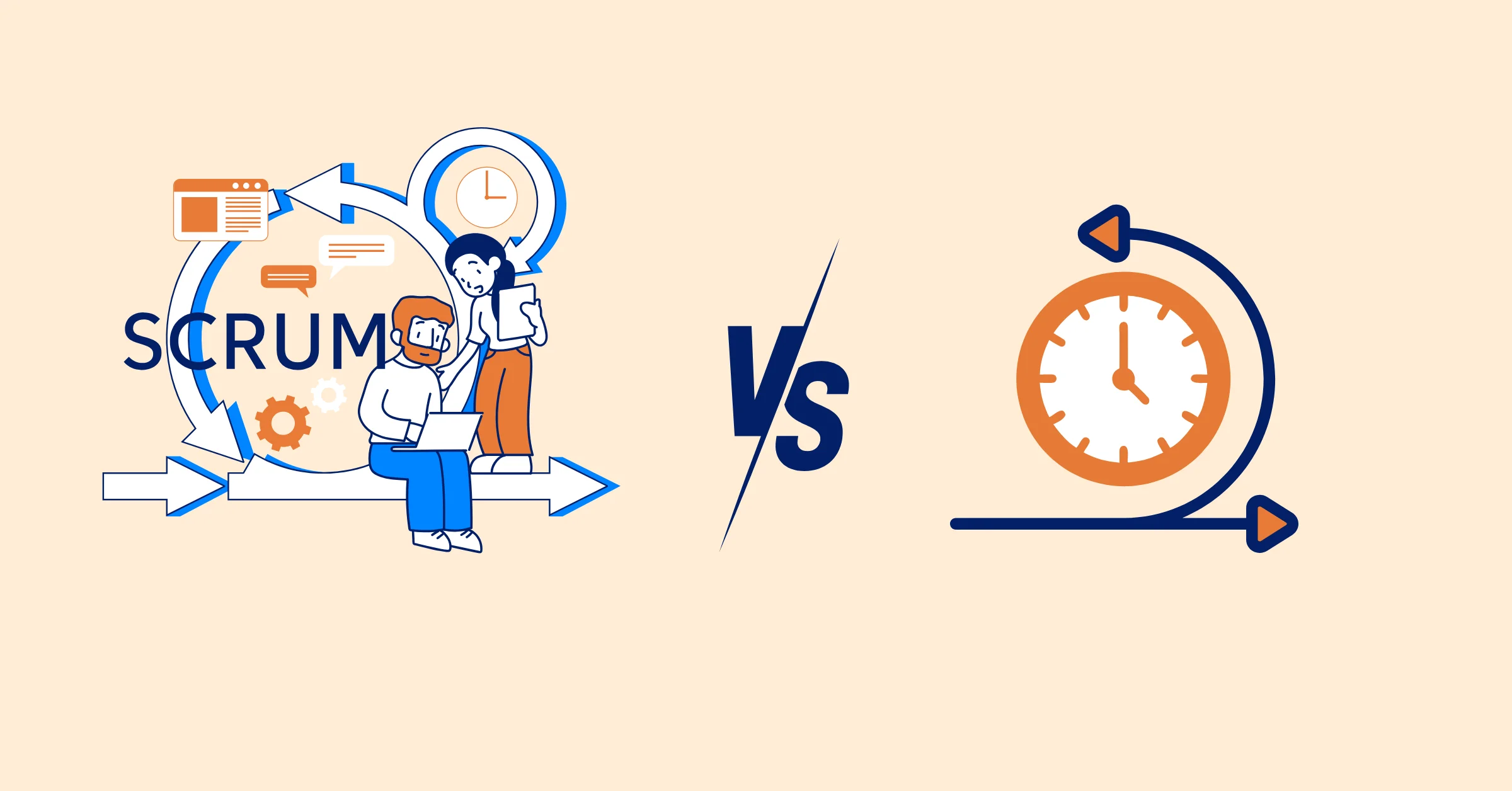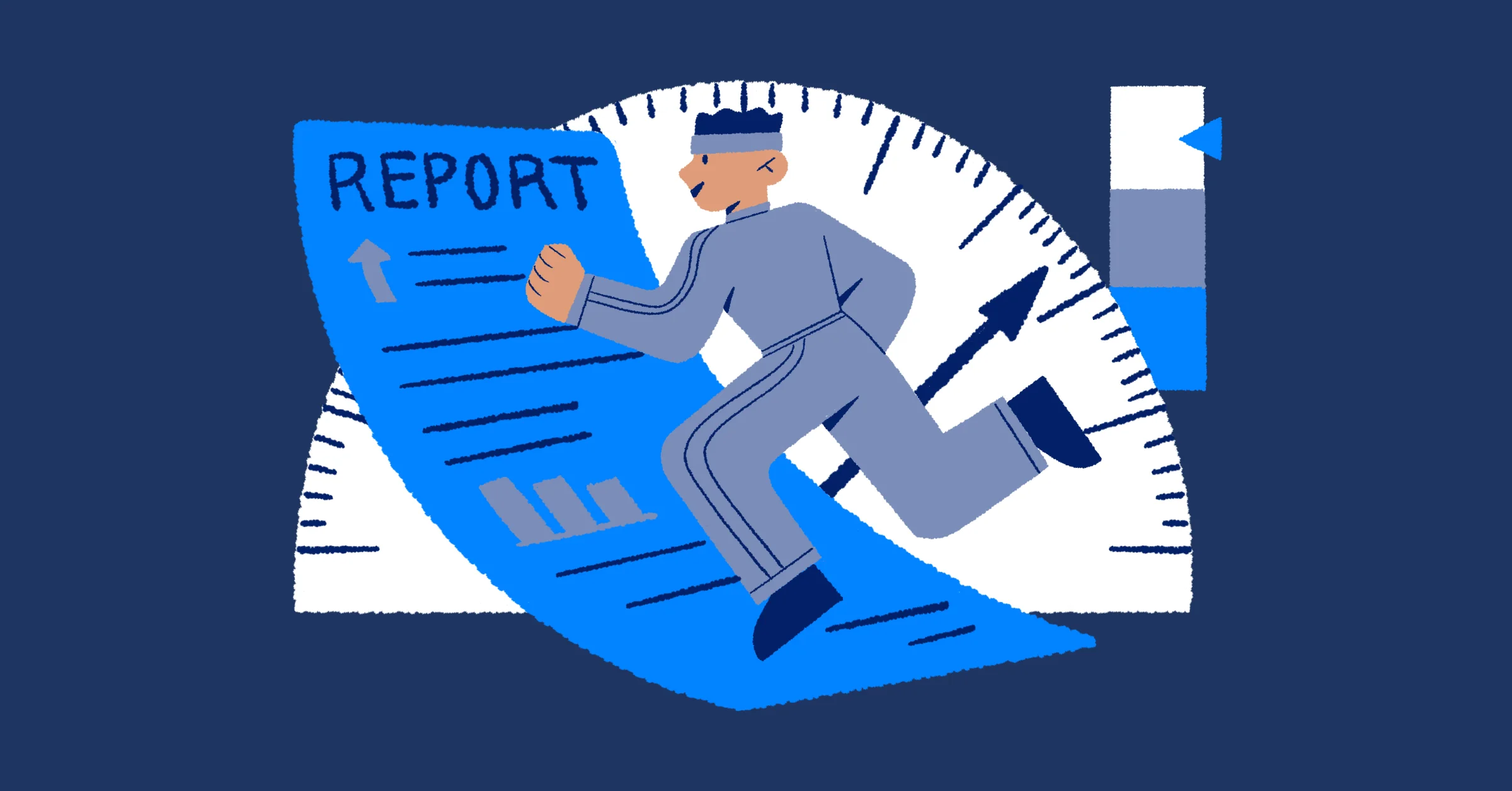Contingency Planning in Project Management: How to Stay on Track When Things Don’t Go as Planned
Learn what a contingency plan in project management is, why it matters, and how to create one that keeps your projects on track—even when things don’t go as planned.
No matter how experienced your team is or how well-structured your project roadmap looks, things rarely unfold exactly as expected. A key resource might suddenly become unavailable. A vendor might delay delivery. Stakeholders might shift their priorities halfway through the project.
These aren't rare “worst-case” scenarios—they're the realities of modern project work.
That’s where a contingency plan in project management becomes a critical tool. It's the difference between a temporary setback and a full-blown crisis. With the right plan in place, teams can stay focused, keep momentum, and respond with clarity, even when the unexpected hits.
In this post, we’ll break down what a contingency plan really is, why it matters more than ever, how to build one, and how to make it part of your everyday project management strategy.
What Is Contingency Planning in Project Management?
A contingency plan in project management is a structured, pre-planned set of actions designed to address specific risks, disruptions, or setbacks that could derail your project's timeline, budget, scope, or deliverables. It's essentially your "Plan B"—and sometimes even a "Plan C" or "D"—created for the parts of your project that are particularly vulnerable to unforeseen challenges.

The goal of a contingency plan isn’t to eliminate risks (that’s what risk mitigation is for), but to ensure your team knows exactly how to respond when those risks materialize. It prepares you for the reality that despite your best planning, some things will go wrong.
Unlike risk mitigation, which is about minimizing the likelihood or impact of potential problems, contingency planning focuses on readiness. It provides a proactive structure for reactive moments, helping your team avoid scrambling under pressure.
Think of it as the emergency kit in your project toolkit. You hope you never have to use it, but when you do, it can save your project from stalling or collapsing altogether.
Why Contingency Planning Matters More Than Ever
Projects today operate in a dynamic, fast-paced environment where uncertainty is baked into the process. Distributed teams, global supply chains, frequent tech changes, and shifting stakeholder demands make it impossible to predict everything.
Here’s why a contingency plan in project management is no longer optional—it’s essential:
- Reduces Downtime: A well-prepared contingency plan allows your team to act quickly, minimizing delays and keeping the project on schedule.
- Controls Costs: Unplanned issues often lead to unexpected expenses. A contingency plan outlines cost-effective solutions to keep budgets in check.
- Builds Stakeholder Trust: Clients, sponsors, and executives value predictability. A solid contingency plan shows you’re prepared, boosting their confidence in your leadership.
- Empowers Teams: Clear action plans reduce stress and confusion, enabling teams to tackle challenges with focus and collaboration.
- Adapts to New Risks: Modern projects face unique challenges—pandemics, cyberattacks, or regulatory shifts. Contingency plans help you navigate these evolving threats.
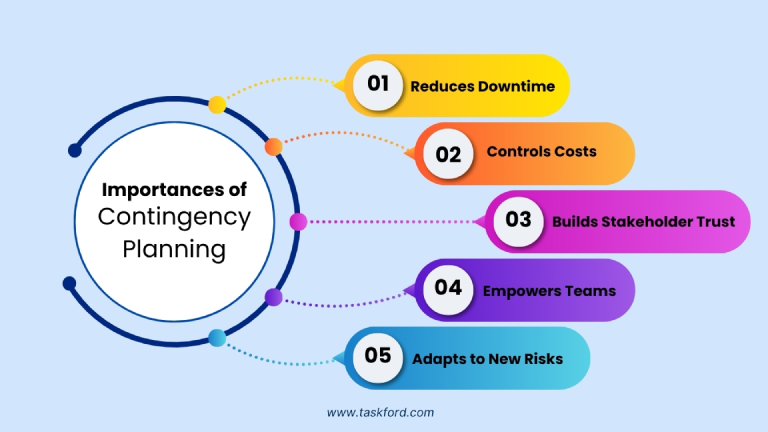
In fact, according to PMI’s 2023 Pulse of the Profession report, organizations with strong risk and contingency practices are 2.5 times more likely to deliver projects on time and within budget. In an unpredictable world, planning for the “what if” is a competitive advantage.
Common Project Risks That Benefit from Contingency Plans
Not every issue requires a backup plan, but certain high-impact risks can derail your project if you’re unprepared. Here are some common scenarios where contingency plans are essential:
- Resource Unavailability: A key team member might leave, fall ill, or be reassigned. A contingency plan could involve cross-training staff or maintaining a list of pre-vetted contractors.
- Vendor or Supply Chain Issues: Delays or failures from suppliers can halt progress. Backup suppliers, alternative materials, or flexible timelines can mitigate this.
- Scope Creep: Clients or stakeholders might request changes that expand the project’s scope. A contingency plan could include a streamlined change approval process or pre-allocated scope buffers.
- Technology Failures: Software outages, hardware breakdowns, or cybersecurity breaches can disrupt workflows. Contingency measures might include redundant systems, offline backups, or rapid-response IT support.
- External Disruptions: Natural disasters, regulatory changes, or economic shifts can impact projects. Contingency plans might involve diversified funding, flexible schedules, or remote work options.
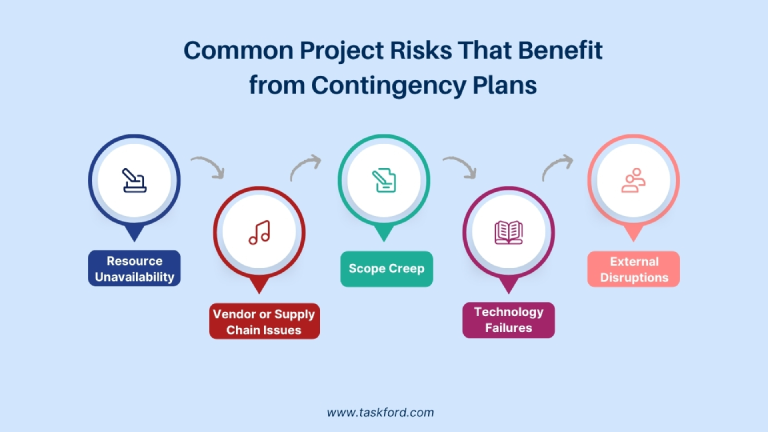
By identifying these risks early, you can focus your contingency planning on the scenarios that pose the greatest threat to your project’s success.
How to Build a Solid Contingency Plan: Step-by-Step
Creating a contingency plan is about balancing preparation with practicality. Follow these steps to develop a plan that’s comprehensive yet easy to execute:
1. Identify High-Impact Risks
Start with a thorough risk assessment. Collaborate with your team, stakeholders, and project sponsors to brainstorm potential risks. Use tools like a risk register (a table listing risks, their likelihood, and impact) or a SWOT analysis to prioritize risks. Leverage data from past projects or industry benchmarks to inform your assessment.
Example: A construction project might identify a risk like “primary concrete supplier fails to deliver due to regional shortages” as high-impact, even if it’s only moderately likely.
Tip: Focus on risks with severe consequences, even if they’re less likely. A 20% chance of a major delay is worth planning for more than a 90% chance of a minor inconvenience.
2. Define Clear Triggers
For each risk, establish specific conditions that signal when to activate the contingency plan. These triggers should be measurable and unambiguous to avoid hesitation. For example:
- Risk: Key developer leaves the project.
- Trigger: Developer submits resignation or is unavailable for more than one week.
- Action: Engage a pre-vetted contractor.
Clear triggers ensure your team acts decisively when needed.
3. Develop Response Strategies
For each high-impact risk, outline a specific, actionable response. These strategies should align with your project’s goals, be resource-efficient, and minimize disruption. Include:
- Action Steps: What will you do? (e.g., switch to a backup supplier)
- Resources Needed: What’s required? (e.g., budget, personnel, tools)
- Timeline: How quickly can the response be implemented?
Example:
- Risk: Primary server crashes, halting development.
- Response: Switch to a secondary cloud server within 4 hours.
- Resources: Pre-configured backup server, IT team on call.
- Timeline: Restore operations within 6 hours.
4. Assign Roles and Responsibilities
Clarity is critical during a crisis. Specify who is responsible for each part of the contingency plan. Ensure team members have the authority, training, and resources to act. For example, designate a specific person to contact backup vendors or approve budget reallocations.
5. Allocate a Contingency Budget
Most projects include a contingency budget—typically 5-15% of the total budget, depending on project complexity and risk exposure. Define how much is set aside, who can authorize its use, and under what conditions.
For example, a $1 million project might reserve $100,000 for unexpected costs like overtime or emergency purchases.
6. Test and Refine the Plan
Test your contingency plan through simulations, such as tabletop exercises (where the team walks through a hypothetical scenario) or stress tests. Identify gaps, such as missing resources or unclear steps, and refine the plan. Review it regularly, especially at project milestones, to ensure it reflects current risks and conditions.
7. Communicate the Plan
Share the contingency plan with all relevant parties: team members, clients, vendors, and stakeholders. Use clear, accessible formats (e.g., a shared document or project management tools). Ensure everyone knows where to find the plan, what triggers it, and their role in executing it. Transparency builds trust and alignment.
8. Monitor and Update
Risks evolve as projects progress. Monitor internal and external factors such as team performance, market conditions, or new regulations and update the plan as needed. Regular check-ins, such as during weekly status meetings, keep the plan relevant.
Real-World Example: Applying a Contingency Plan
Let’s look at a practical example: a $750,000 software development project with a six-month timeline. During the risk assessment, the project manager identifies a critical risk: the primary cloud service provider could experience an outage, halting testing and deployment.
Contingency Plan Details
-
Risk: Cloud provider outage lasting more than 24 hours.
-
Trigger: Official notification from the provider or inability to access services for 24 hours.
-
Response:
- Switch to a pre-configured secondary cloud provider within 4 hours.
- Notify the development team and reassign testing tasks to the backup environment.
- Communicate with stakeholders about the issue and the expected resolution time.
-
Resources: Secondary cloud provider account, IT team trained on the switchover process, $10,000 contingency budget for additional server costs.
-
Roles: IT lead oversees the switch, project manager updates stakeholders, and development lead reassigns tasks.
-
Timeline: Full operations restored within 8 hours.
Outcome
When the cloud provider experiences a 48-hour outage two months into the project, the team activates the contingency plan. The IT lead switches to the backup provider in 3 hours, and testing resumes with minimal disruption. Stakeholders are informed promptly, and the project stays on schedule, avoiding a potential two-week delay and $50,000 in additional costs.
Final Thoughts: Preparedness Builds Project Confidence
A contingency plan is more than a safety net—it’s a strategic tool that empowers your team to face uncertainty with confidence. By anticipating high-impact risks, defining clear responses, and communicating effectively, you can turn potential crises into manageable challenges. In today’s complex project landscape, where disruptions are inevitable, a well-crafted contingency plan is the difference between chaos and control.
Start building your contingency plan today. Review past projects for lessons learned, engage your team in risk brainstorming, and allocate resources for the unexpected. With a solid Plan B in place, you’ll not only keep your project on track but also build trust and resilience that sets you apart as a project leader.
Related Reading
- What is Project Management - The Ultimate Guide for Beginners
- Agile Project Management What is it and The Key Concepts
- Critical Path Method in Project Management
- WBS Gant Charts - Work Breakdown Structure
Making work simpler,
smarter, and more connected
Join our waitlist and be notified first.

Related Blog
Subscribe for Expert Tips
Unlock expert insights and stay ahead with TaskFord. Sign up now to receive valuable tips, strategies, and updates directly in your inbox.

